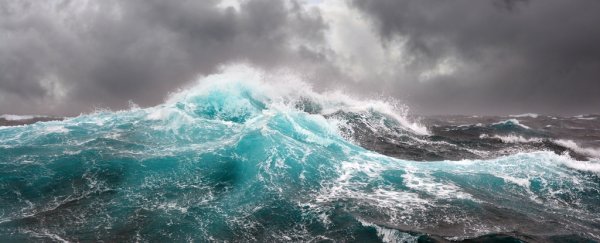Nothing on Earth can live without water. The origin of water on Earth, therefore, is the origin of life in the Solar System (and the Universe) as we know it.
Figuring out where and how our world obtained its water might be key to finding life on other worlds, but the truth is we don't know for sure where it came from.
Nonetheless, it's commonly accepted that one potential mechanism for water delivery was bombardment from water-bearing asteroids and comets when Earth as we know it today was much younger.
But a new analysis of rocks collected from the Moon and brought to Earth during the Apollo era suggests that this might not actually be the case.
Rather, according to a team of researchers at Lawrence Livermore National Laboratory, the likeliest explanation is that Earth formed with its water. In other words, it was here all along.
"Earth was either born with the water we have, or we were hit by something that was basically pure H2O, with not much else in it," explains cosmochemist Greg Brennecka of LLNL.
"This work eliminates meteorites or asteroids as possible sources of water on Earth and points strongly toward the 'born with it' option."
The Moon might seem a strange sort of place to look for Earth's water. It's dusty, dry, and extremely not wet at all.
As it turns out, though, the Moon is a great place to study Earth's history. The Moon formed when two massive objects – one roughly the size of Mars, the other a little smaller than our own world – smacked together and reformed into blobs that would become Earth and its Moon.
Earth's memory of this event has weathered over time, but because the Moon has no plate tectonics or weather, geological evidence doesn't erode the same way.
That's not to say that there are no processes at all up there. Impacts from other objects and previous volcanic activity can alter the lunar surface. There are, however, some samples in the Apollo collection that are relatively unchanged.
Now, according to the giant-impact hypothesis, that giant smash-up 4.5 billion years ago actually depleted Earth and the Moon of their volatiles.
That's why, under that model, the Moon is so dry; and, compared to other objects in the Solar System that have water, the bulk of Earth is pretty dry too, especially once you take its size into account.
To understand the history of the Earth-Moon system prior to the giant impact, the team looked at three lunar samples that crystallized 4.3 to 4.35 billion years ago, examining two isotopes: volatile and radioactive isotope rubidium-87 (87Rb), and the isotope it decays into, strontium-87 (87Sr).
The latter especially is thought to be a good proxy for understanding the long-term volatile budget of the Moon, and relative abundances of moderately volatile elements, such as rubidium, reflect the behavior of more volatile species, like water.
Interestingly, the team's analysis revealed that there was very little 87Sr in the Earth-Moon system, even prior to the giant impact. This suggests that both proto-Earth and the impactor, Theia, were strongly depleted in volatile elements, suggesting that volatile depletion was not a result of the giant impact after all.
This means that the different volatile distributions on Earth and the Moon were inherited from Earth and Theia, which could explain why Earth is wetter. It also suggests that both bodies probably formed in the same general region of the Solar System, rather than Theia forming farther out and migrating in, and that the impact couldn't have happened earlier than 4.45 billion years ago.
Although this challenges some accepted views of the formation of Earth and the Moon, it neatly explains the origins of volatiles in the Earth-Moon system, the researchers say. It accounts for differences in their volatile proportions, and explains the similarities in isotope ratios.
"There were only a few types of materials that could have combined to make the Earth and Moon, and they were not exotic," explains cosmochemist Lars Borg of LLNL.
"They were likely both just large bodies that formed in approximately the same area that happened to run into one another a little more than 100 million years after the Solar System formed…but lucky for us, they did just that."
The research has been published in PNAS.
